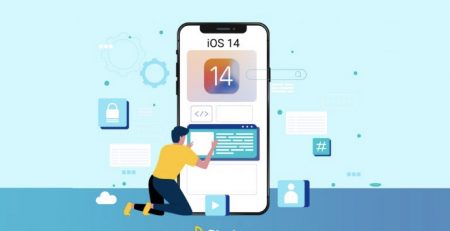Tips to Keep in Mind for a Seamless Remote Design Sprint
Design Sprints have revolutionized the way businesses navigate their way across creative management. It has integrated itself into the regular workflow of different industries and has particularly impacted the future of UI/UX design methods. Understanding the key features of design sprint and its implementation, both remote and otherwise, can be incredibly useful to an aspiring app designer.
What is a Design Sprint?
Design Sprint is a step-by-step play of design thinking and product management that gets you the desired results with the best of efficiency and planning. To understand it simply, think about a regular brainstorming session. Now add expert technicians and designers around a table, and let them juggle ideas and test out prototypes in a strategic manner.
Design Sprint, as a concept, entered the UX/UI design arena fairly recently and took off with great success. It owes its rapid implementation to its simple structure and result oriented scheme. Thanks to its extremely methodological yet free-paced formula, this design strategy has been adopted by many of the world’s leading Corporations some of which include Uber, Google, and Airbnb.
The structure is built around a fine-tuned 5-day process:
- Day 1: Mapping
- Day 2: Sketching
- Day 3: Evaluate
- Day 4: Prototypes
- Day 5: Testing
The general scheme gradually moves from the process of generating ideas to comparing strategies, and finally to building prototypes and testing them out in the real world. The design sprint methodology has been repeatedly utilized by companies to create applications from scratch.
Challenges of Running a Remote Design Sprint
The shifting pace of the market coupled with industrial globalization has realigned remote working from a convenient option to a business necessity. Fortunately, technological advances, technews and the sheer robustness of the Internet today allow us to move our work to an online platform without too much hassle.
Running a Design Sprint team from remote settings can be a great way of combating large distances and high workloads, but it comes with its own set of challenges:
Constrained Collaborations
Remote Design Sprints usually bring together a host of different people over a video conference or a simple networking portal. The process is highly reliant on keeping the crowd engaged and interactive for a smooth exchange of ideas and concepts. Unfortunately, sometimes the virtual experience can drastically limit the amount of free discussion that can take place while setting up a sense of individual isolation. It can get very hard to account for the lack of physical proximity and close socialization.
Technical Glitches
The best of our gadgets can sometimes fail to account for minor technical issues. We’ve all been through the annoying ordeal of network issues at the crucial moments of a meeting so there’s no need to elaborate. Design Sprints on online portals can be complete train wrecks even if there is a singular point of disconnection.
Confused Scheduling
The packed 5-day routine of a design sprint can be quite challenging to plan on a remote basis. Different team players are located in extremely different settings and have varied backgrounds. Balancing out the time taken for different members of the groups can be critical to sticking to the routine and producing fast results. Let’s not forget time zone differences between the individuals. It can be quite hectic to coordinate between people and find the appropriate work timing to engage in discussions. To make it easier, try using a daily planner to schedule tasks and keep everyone on track.
Communication Gaps
Several people on the same constrained networking platform can be quite chaotic to manage. Important conversations and ideas can often get lost in the mix when there are multiple people trying to get their point across over the screen. Losing out on important inputs can affect the design sprint process and it can be rather counterproductive to set up large groups at a video conference.
Tips for Running a Seamless Design Sprint
Curating the perfect design sprint session requires the right blend of knowledge about team management and product requirements. Factoring in all the problems that can build up over remote working conditions and maneuvering the design methods to account for the issues:
Building the right team: Finding the balance between the right number of people from different backgrounds and a minimal number of efficient collaborators can significantly optimize the design process. It is important not to overload the group with too many participants.
Pre-Sprint Discussions: Gather the group a week before the actual design sprint session for a semi-formal meeting. It can be a simple gathering for introductions and setting up the right environment. Having more than one of these pre-sprint meetings is a great way to familiarize the group with each other and encourage discussions.
Scheduling the Sprint: Working remotely requires a schedule that conveniently brings together every member of the group on a breakneck 5-day plan. Consulting with everyone and setting up the right dates can help maintain the perfect routine. To effectively set the time frame calendar applications and work schedule planner templates can also be used to block out overlapping work schedules.
Settings and Ground Rules: Ensure that every individual in the team knows what is required of them over the course of the 5 day period. It always helps to create a Checklist that lists out essential facilities. Make sure that everyone is equipped with,
- Strong internet connection
- Clear video cameras and microphones
- Decent lighting
- Efficient System Setup
- Conferencing and Designing Software
Setting up some basic communication rules can also allow productive interactions.
Productive Recreation: Optimizing the group effort means keeping up everyone’s spirits during the Sprint. Starting and ending the day with some relaxed warm-up exercises or casual conversation can be very effective in maintaining the tempo of work later. The facilitator can also organize regular breaks or entertain the group with some light music.
Conclusion
Design Sprints has become a greatly popularized method of design thinking with greatly optimized planning paradigms. They are incredibly useful to any company which wants to scale up its digital product’s UX/UI Design strategies and compete with the rapid pace of the silicon age.
Remote working has become quite the norm for businesses and start-ups. Design Sprints, it can regulate the planning processes when there is restricted physical accessibility. The challenges that can pop up with online work setups can be effectively culled with proper planning. All it can take to channel the right kind of productivity is an enthusiastic and capable team led by a capable facilitator.




